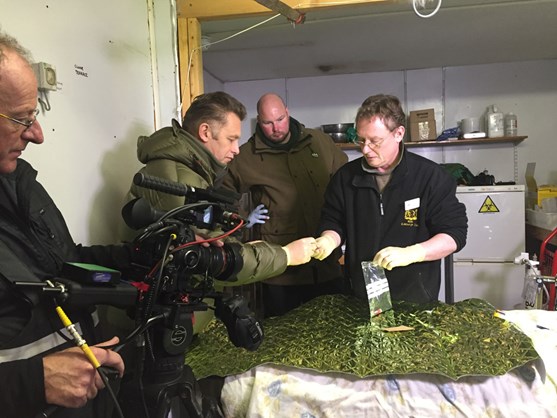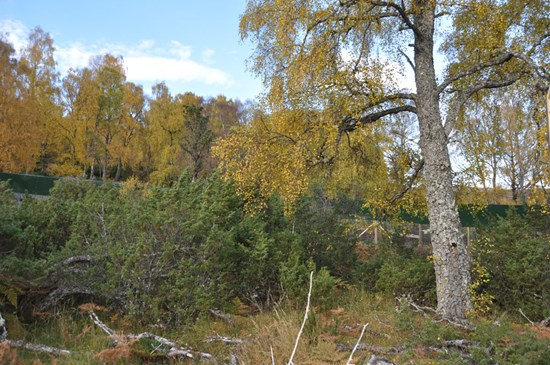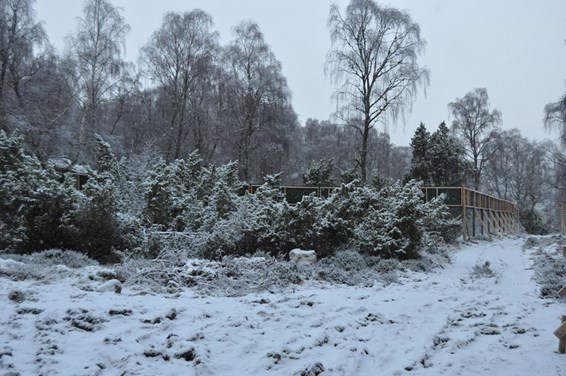Scottish wildcat breeding programme – what, where and when?
16/02/2016 in Conservation
By David Barclay, RZSS Cat Conservation Project Officer
People who come to see Scottish wildcats in zoos or wildlife parks across the UK not only have the chance to see one of the UK’s rarest and most elusive mammals; they also get to see animals that are part of a captive breeding programme, working towards future releases across Scotland.
Following the birth of six kittens at RZSS Highland Wildlife Park in 2015, I am often asked the same questions: WHAT happens next? WHERE do the kittens go? WHEN do they leave their parents?
These questions are fundamental to captive breeding programmes and the answers help shed light on what is often a rather complicated topic. Without space we cannot grow the population; without new young animals we cannot continue to breed the population; without new genes we cannot have a genetically diverse population; and without coordination and communication we cannot have any of it! As you can see, it is about far more than just breeding cats.
Coordinating the captive breeding programme (or the Scottish wildcat studbook, as it is known) is a job that is often dictated by the time of year. From January to March, cats need to be moved and paired for breeding. From April to June collections wait nervously and prepare for births, and from October to December juvenile cats are pushed away by their parents and are moved on for breeding of their own. This all works hand in hand with close management of the population dataset (studbook) and regular communication between holders.
As you may have seen on TV, RZSS and Scottish Wildcat Action recently featured on BBC’s Winterwatch, where we discussed the genetic and pelage scoring system we have in place. This helps us to make more informed decisions regarding the captive breeding programme. Using one of the cats we assessed we can run through the entire what, where and when process.

Of the three kittens in the litter I will use the male as an example. This animal was sedated by our vet and given a detailed health check, during which samples were collected for disease screening and genetic testing, and images were taken for pelage scoring. Fast forward one week and the results show that the cat is free from disease, in great physical condition and passes the genetic and pelage test to continue breeding in the programme.
This male is now nine months old and is being pushed away by his mother to fend for himself, which happens naturally in the wild. It is now our role to provide the “dispersal” process, where the male will move away from his mother and find a mate of his own. In studbook terms this means assessing the captive population to see what collection may need a young male, who has space for another cat and, more importantly, who has a female that is unrelated to this male. Will we form a new pair for a new collection? Will we replace an older male with this young male? And so on.

In this case I was able to find a new home for the male at Alladale Wilderness Reserve. Alladale have been participating in the Scottish wildcat breeding programme for several years and of late have been waiting patiently for a new breeding male. With an unrelated female, enough space, established links with myself and other wildcat collections, and a huge amount of support for wildcat breeding and release, they ticked all the right boxes.
So, at the end of January, I travelled up to Alladale with our young male and watched as he was released into his new enclosure. After a short time to settle in and let the female know he has arrived, the male will be introduced to the female for breeding and the wildcat cycle will continue again.

This programme is an insurance policy for the species which is provided through the support and collaboration of wildcat holders, like Alladale, across the UK. There is a long road ahead but at the end of it, when cats are needed for release across Scotland, we will all be glad we have the Scottish wildcat captive breeding programme.
Until next time
David
 Thank you to the players of the People's Postcode Lottery who are helping us to deliver these important cat conservation projects.
Thank you to the players of the People's Postcode Lottery who are helping us to deliver these important cat conservation projects.
Featured Articles

An update from the Budongo Forest
19/04/2024 in Conservation

Edinburgh Zoo named best zoo in Scotland
15/04/2024 in Edinburgh Zoo
Latest News
-
News

27/03/2024
HRH The Princess Royal visits project to restore wildcats to Scotland
HRH The Princess Royal visited the Saving Wildcats project, based at the Royal Zoological Society of Scotland’s (RZSS) Highland Wildlife Park, to learn more about the partnership project working to save one of the UK’s most endangered carnivores.
-
News

13/10/2023
Critically endangered wildcats now call the Cairngorms National Park home
The first round of wildcat releases in Scotland has been completed by Saving Wildcats, led by the Royal Zoological Society of Scotland (RZSS) in partnership with NatureScot, Forestry and Land Scotland (FLS), The Cairngorms National Park Authority, Nordens Ark and Consejería de Sostenibilidad, Medio Ambiente y Economía Azul de la Junta de Andalucía.
-
Blog

24/07/2023
What’s on the menu for the European wildcats
European wildcat is a secretive species, and so it is difficult to observe their hunting and feeding behaviour in the wild. Analysing their scats is an alternative way to find out what they eat and therefore how they fit into the ecosystem. RZSS WildGenes scientists developed a technique to detect DNA of different prey species in scat samples.
-
News

22/06/2022
Ten more wildcat kittens born at Saving Wildcats conservation breeding for release centre
Keepers at the Saving Wildcats conservation breeding for release centre have captured images of one of two new litters of wildcat kittens, who could be among the first of their species to be released into the wild in Britain.

























Follow EZ